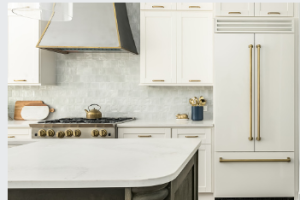Kitchens are a vital part of your home, as they are the heart of your house and where your family gathers to spend time together. However, there are some things to remember when planning for a kitchen. These tips can help you choose a layout that suits your needs and lets you maximise your kitchen space.
 Open vs. closed kitchens
Open vs. closed kitchens
To make your kitchen a hub of activity, you must decide whether an open or closed kitchen is proper. There are advantages and drawbacks to both. For example, choosing an open layout could mean a lot of extra work, while a closed configuration can offer you some privacy.
An open kitchen is a space without walls, typically incorporating an island for food preparation or informal dining. It may also feature big sliding doors that let in natural light. Some open kitchens are designed to blend in with the rest of the space and are often integrated with the living room or dining area.
Closed kitchens Adelaide are often designed with walls of all sizes. It allows more space for appliances and storage and more surface area for furniture and other items. You’ll also have to contend with noise and smells. These kitchens are best suited to traditional homes or a person who enjoys a little solitude.
The benefits of an open kitchen include a more welcoming ambience and the ability to interact with other people relaxed. In addition, an open kitchen is handy if you have kids. Parents can watch television, check on their kids, or relax while they’re in the kitchen.
On the other hand, a closed kitchen can create a more formal dining experience. However, you might also have to deal with traffic bottlenecks because a limited number of openings can be a limiting factor in a busy neighbourhood.
While a closed kitchen is the obvious choice for the average person, an open one is an excellent option for those who like to cook. Many homeowners prefer the open layout to the closed one, as it allows for better ventilation, more natural light, and the ability to multitask.
Open kitchens are also more convenient for utility and cleaning—no need to worry about spilling drinks on the floor or cleaning the counters all the time. Besides, a kitchen is already the most expensive room in the house.
L-shaped layouts
L-shaped kitchen layouts are one of the most popular types of design today. This kitchen provides more appliances, storage, and workspace options. It also helps to create an open floor plan.
The L-shaped kitchen layout is best suited for small and medium-sized kitchens. If you aren’t sure what layout will work for you, consult a professional. Whether you prefer a classic or modern design, an L-shaped kitchen plan fits your style.
In addition to the functional benefits of an L-shaped kitchen, the open design also helps to separate the clean and cooking areas. A neutral colour palette can also help make a space feel larger and airier.
A kitchen island can be an excellent addition to an L-shaped layout. Not only does it increase the available worktop space, but it can also provide additional seating.
A kitchen island is a great way to give your family a place to gather and chat. A kitchen island also gives you more prep and storage space. However, you will need room around it to accommodate it.
Adding a kitchen island to an L-shaped design can also improve efficiency. It makes it easier to prepare meals. Having a place to sit while preparing food can save you from getting up and moving to keep an eye on the kids.
An L-shaped kitchen can be wise for homeowners who want to maximise space. Unlike other kitchen designs, an L-shaped layout doesn’t require walls to separate the kitchen from other home parts. You’ll enjoy better communication and more efficient workflow by removing these barriers.
Although L-shaped kitchen layouts can be trickier to design and furnish, they’re well worth the effort. And they don’t cost an arm and a leg. The L-shaped kitchen layout is ideal for homeowners creating a modern, open design in a compact space.
Wet vs. dry kitchens
A wet and dry kitchen is designed for different purposes in your home. They can be separated or combined. However, they do share some common appliances.
The wet kitchen is where you do heavy-duty cooking, such as boiling, frying, or roasting. It would be best to ensure adequate ventilation to avoid mould, odours, and smoke. It should also be easy to clean.
In addition, it should be accessible from your dining area. Everyone can cook in the wet kitchen if you’re having a family meal. Adding a glass-type door or partition helps to create a visual separation between the two kitchens.
While separating the kitchens Adelaide isn’t always necessary, it does increase storage space and can improve functionality. Choosing cabinets that are easy to clean can also help.
To make a wet kitchen look elegant, choose light-coloured floor tiles. Ceramic or porcelain tile flooring can be a great choice. These types of tiles are durable and easy to maintain. Also, opt for a tile backsplash.
If you prefer a more modern look, choose white or blue cabinets. It will give a neutral backdrop to your wet and dry kitchen. High-gloss cabinets can also be a good option.
A glass sliding door can separate the wet and dry areas. It is especially useful if you use the damp kitchen as a breakfast nook.
Ideally, the wet and dry kitchens should be located near each other. The damp kitchen near a window will allow for natural light and ventilation. An exhaust fan can vent the heat and fumes from the wet kitchen. Adding a ceiling fan can also help to disperse the odours.